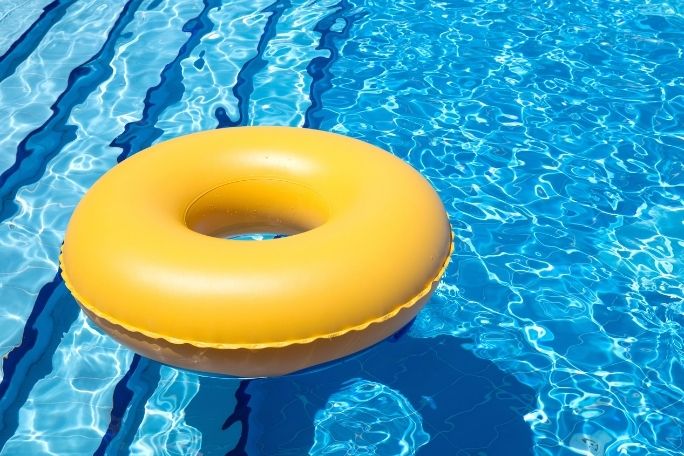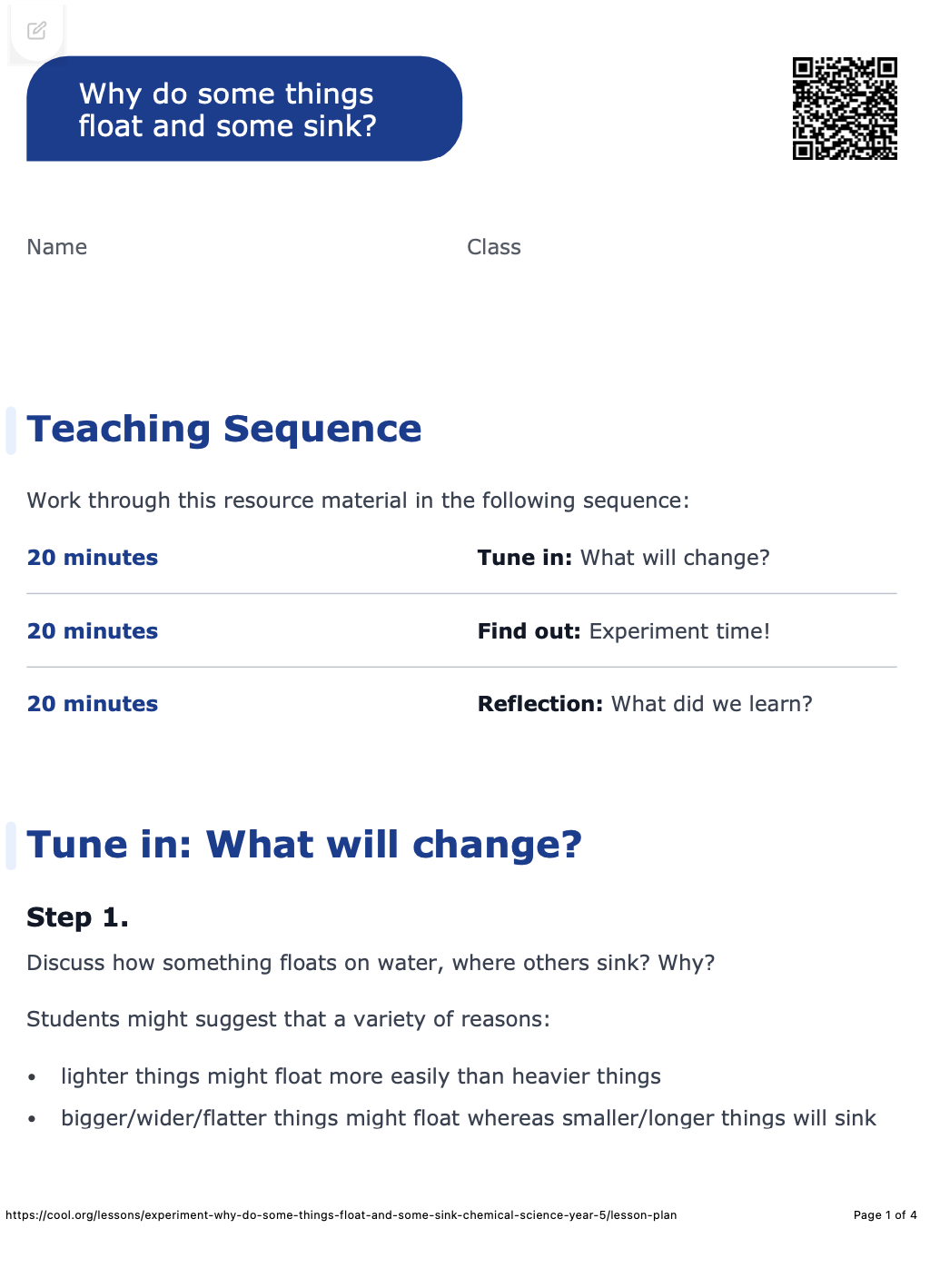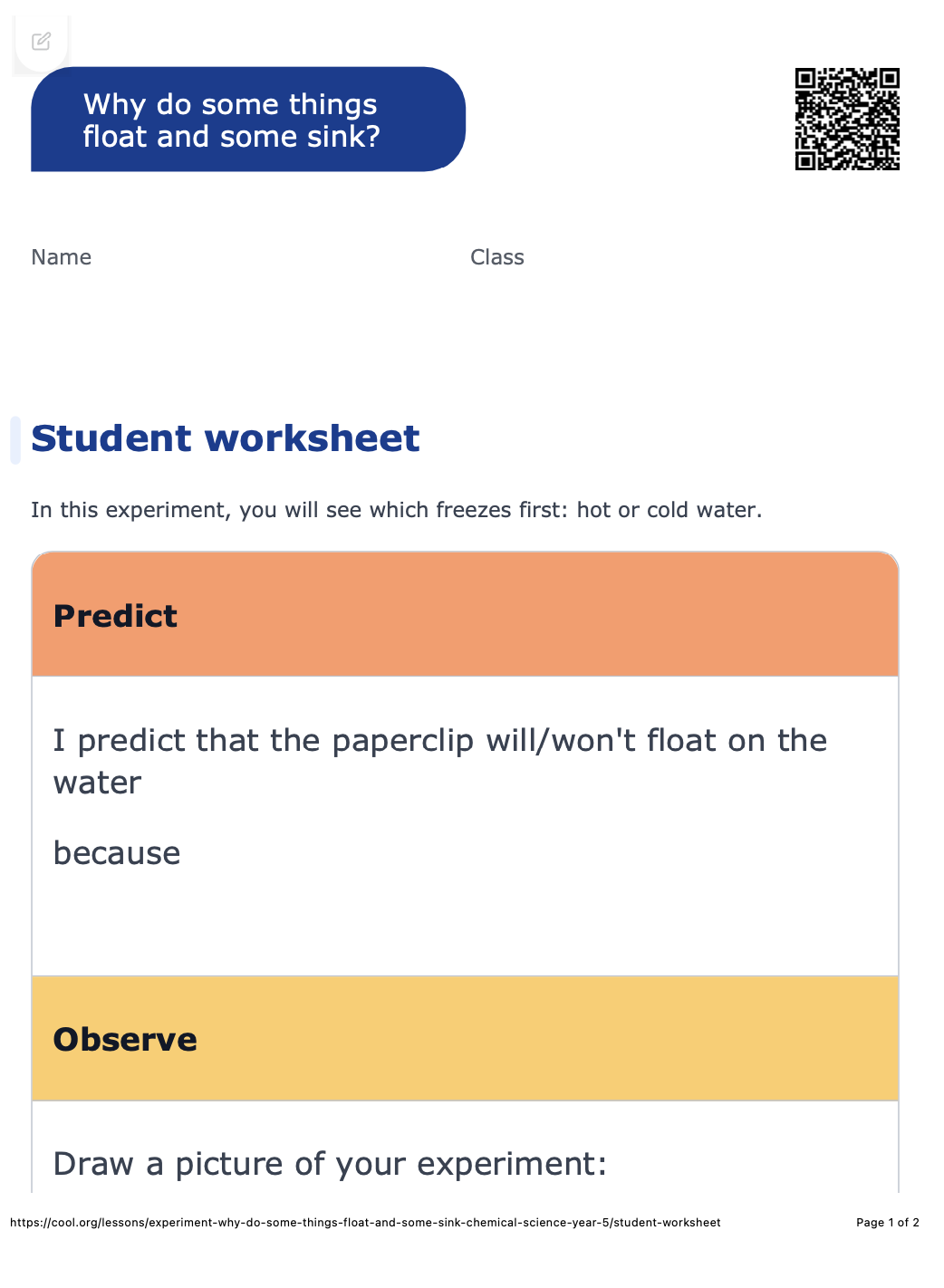Lesson summary
Students conduct an experiment that demonstrates the arrangement of particles in water.
Learning intentions:
Students will...
- investigate how the arrangement of particles in water causes objects to float on its surface.
Success criteria:
Students can...
- conduct an experiment to prove a theory.
Lesson guides and printables
Curriculum links
Select your curriculum from the options below.
Lesson details
Curriculum mapping
Australian Curriculum (v9.0) content descriptions:
Science:
Students learn to:
- explain observable properties of solids, liquids and gases by modelling the motion and arrangement of particles (AC9S5U04)
- explain observable properties of solids, liquids and gases by modelling the motion and arrangement of particles (AC9S5U04)
Relevant parts of Year 5 achievement standards:
By the end of Year 5, students relate the particulate arrangement of solids, liquids and gases to their observable properties.
Resources required
- Bowl, small
- Dishwashing liquid
- Ground pepper
- Paper clip
- Toothpick
Skills
This lesson is designed to build students’ competencies in the following skills:
- curiosity
- reflection
- critical thinking
Additional info
Level of teacher scaffolding: Medium - support students in the theories, practical experimentation, and explaining and recording their observations.
This is an original Cool+ lesson.
Related professional learning
How to Teach Science More Effectively
Quick summary: This course will help teachers better understand and apply evidence-based tools for effective science teaching.



Welcome back!
Don't have an account yet?
Log in with:
Create your free Cool.org account.
Many of our resources are free, with an option to upgrade to Cool+ for premium content.
Already have an account?
Sign up with:
By signing up you accept Cool.org's Terms and Conditions(Opens in new tab) and Privacy Policy(Opens in new tab).